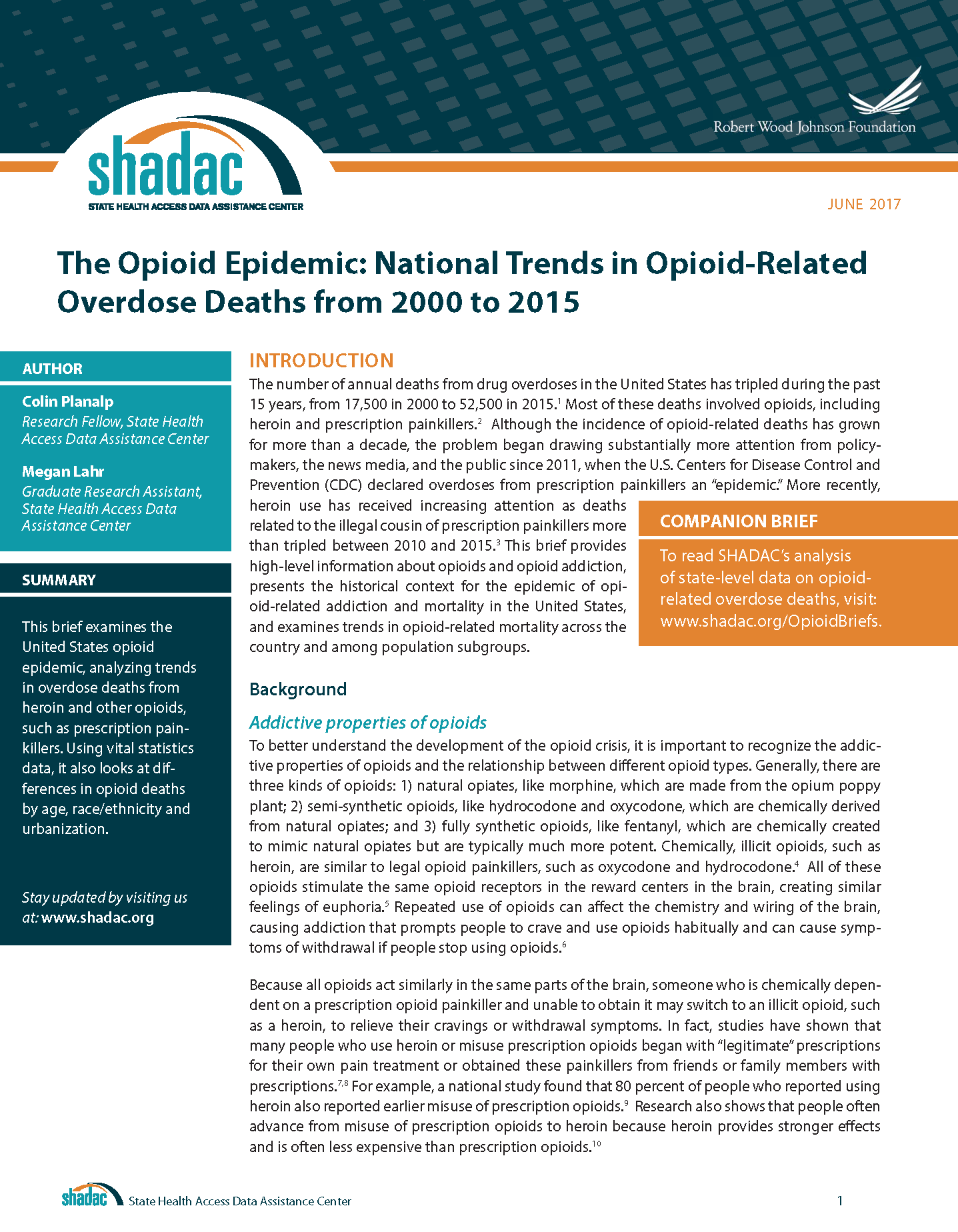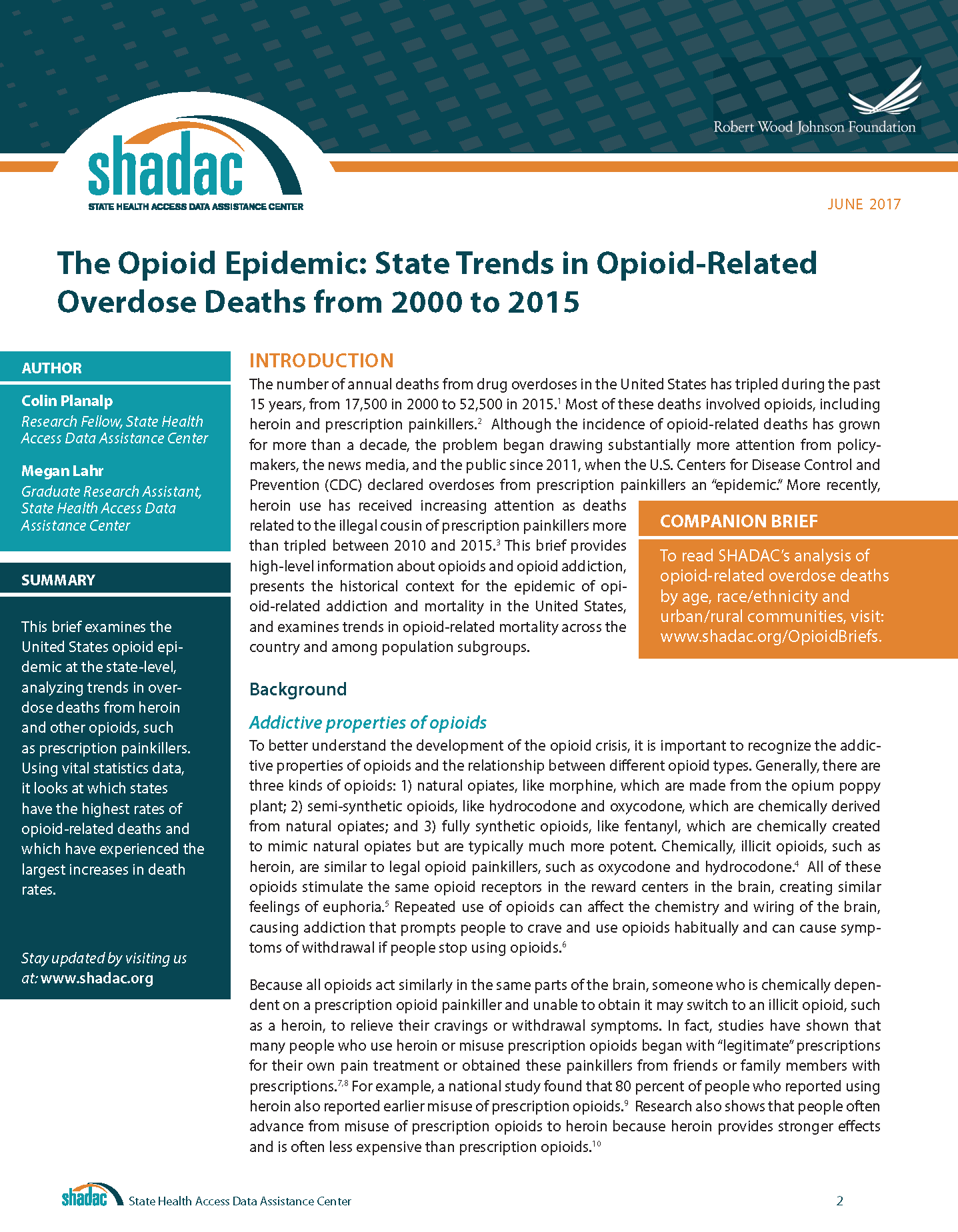Blog & News
SHADAC Comments on New Direction for Center for Medicare and Medicaid Innovation
December 07, 2017:On September 20, 2017, the federal Center for Medicare and Medicaid Innovation (Innovation Center) issued a request for stakeholder feedback on a proposed new direction for the Center, which is shifting its focus toward testing new models of patient-centered care that emphasize choice and competition.
| Innovation Center: Elements of Proposed New Direction | ||
|---|---|---|
|
Guiding Principles
|
Potential Models of Interest
|
|
The Innovation Center laid out a set of guiding principles for this shift as well as a list of potential models of interest (see text box).
Comments from SHADAC: Summary
Drawing on our experience providing evaluation services to states implementing innovative ways to deliver and pay for health care, SHADAC provided feedback to the Innovation Center. This feedback is summarized below.
Access the full text of SHADAC’s response.
Feedback: Guiding Principles
SHADAC commented on the principles of (a) transparent model design and evaluation and (b) small-scale testing.
Regarding transparency in model design and evaluation, we emphasized two key points:
- Successful model design should include planning and discussion of parameters for evaluation. Specifically, the information, data, and evidence needed to determine the impact of new models should be determined in advance, and data collection and evaluation requirements should be prioritized from the outset and revisited over time.
- Evaluations of innovations should include clear documentation of actual interventions to assess outcomes. Evaluations must determine how models are implemented in practice (versus planned interventions) in order to better associate interventions with changes in outcomes.
Regarding the principle of small-scale testing, SHADAC identified two considerations:
- The Innovation Center should focus on developing the capacity to monitor similar state-based models across states to inform intervention scalability. To this end, effort should be put toward developing measurement frameworks, standards for data collection, and metrics to respond to questions about the efficacy of reforms.
- Adequate funding should be provided to support state and local evaluations and to support the timely release of interim and final evaluation results in order to promote accountability and shared learning.
Feedback: Potential Models – State-based and Local Innovation, Including Medicaid-Focused Models
SHADAC identified two important lessons from our work with states implementing delivery system and payment reform that can inform future state-based models:
- Flexibility in model implementation must be balanced with participant accountability.
- It is important to determine and communicate the value (or return on investment) of payment reforms and to develop data collection systems to support this work.
Feedback: Opportunities and Challenges Associated with Potential Models
SHADAC also identified opportunities and challenges for states implementing payment and delivery system models.
The opportunities identified were (among others): accelerating progress and facilitating learning through access to external expertise; facilitating evaluation of market and payment reforms through APCD analytic work and development; and encouraging provider organization participation by promising data analytics during model design.
On the flipside, SHADAC identified the following challenges: performance measurement issues; the demand for more timely claims data and the integration of clinical data with administrative/claims data; data privacy legal issues; and limited capacity among provider organization for provider electronic data-sharing outside of their own organization walls.
Other Feedback: Dissemination of Evaluation Findings
SHADAC encouraged the Innovation Center to continue to support rapid-cycle feedback reporting from required state-led evaluations. We also noted that evaluation plans and interim findings could be more accessible to other states through Innovation Center website links and up-to-date inventories, infographics, or dashboards of evaluation and monitoring methods, activities, data sources, and results.
View the full text of SHADAC's response below or download the PDF here.
Publication
Comparing Federal Government Surveys That Count the Uninsured: 2017
This brief provides an annual update to comparisons of uninsurance estimates from four federal surveys1:
- The American Community Survey (ACS)
- The Current Population Survey (CPS)
- The Medical Expenditure Panel Survey - Household Component (MEPS-HC)
- The National Health Interview Survey (NHIS)
In this brief, we present current and historical national estimates of uininsurance along with the most recent avaialble state-level estimates from these surveys. We also discuss the main reasons for variation in the estimates across the different surveys.
1Another federal survey that provides estimates of the uninsured is the Behavioral Risk Factor Surveillance System (BRFSS), which provides uninsurance estimates for the adult population 18 years and over nationally and among states. Details about the BRFSS are included in Appendix A of the brief, and estimates from the BRFSS are provided in Appendix B.
Publication
New Coverage Data from the ACS & CPS: An Annual Conversation with Census Bureau Experts (2017 Webinar)
Date: Tuesday, September 19, 2017
Time: 12:00 PM to 1:00 PM CST
See below for an event recording, slides, transcript, and related resources.
Download a PDF of the presentation slides.
Download a transcript of the event.
This webinar gives an overview of the 2016 health insurance coverage estimates from two key, large-scale federal data sources: The American Community Survey (ACS) and the Current Population Survey (CPS).
Data from these annual surveys paint a picture of coverage at the national and state level under three years of ACA implementation while also providing historical trend information for context.
This webinar examines the new estimates with technical insight from experts at the U.S. Census Bureau, which administers both the ACS and CPS, and from SHADAC researchers.
Viewers will learn about:
- The new 2016 national and state coverage estimates
- When to use which estimates from which survey
- How to access the estimates via Census reports and American FactFinder
- How to access state-level estimates from the ACS using SHADAC tables
SHADAC researchers and Census experts also answer questions from attendees after the presentation.
Event Resources
Comparing Federal Government Surveys That Count the Uninsured (Annual SHADAC Brief)
2016 ACS Tables: State & County Uninsured Rates, with Comparison Year 2015 (SHADAC Resource)
Health Insurance Coverage Measurement in Two Surveys (U.S. Census Bureau Blog)
U.S. Census Bureau: Health Insurance (website)
Who Are the Uninsured? (U.S. Census Bureau Blog)
Brief #47: New CPS Health Insurance Content: Data Release Timeline and Question Text (SHADAC Brief)
Using SHADAC Health Insurance Unit (HIU) and Federal Poverty Guideline (FPG) Microdata Variables (SHADAC Brief)
Publication
SHADAC Newsletter: September 2017 Special Federal Data Release Edition
The SHADAC newsletter contains updates on SHADAC activities, news from the states, resource updates, and blog highlights. Subscribe to our newsletter here.
Publication
The Opioid Epidemic: National and State Trends in Opioid-Related Overdose Deaths, 2000-2015 (Briefs and Maps)
The number of annual deaths from drug overdoses in the United States has tripled in the past 15 years, from 17,500 in 2000 to 52,500 in 2015.[i] Most of these deaths involved opioids, including heroin and prescription painkillers.[ii] Although the incidence of opioid-related deaths has grown for more than a decade, the problem began drawing substantially more attention from policymakers, the news media, and the public since 2011, when the U.S. Centers for Disease Control and Prevention (CDC) declared overdoses from prescription painkillers an “epidemic.” More recently, heroin use also has received increasing attention as deaths related to the illegal cousin of prescription painkillers more than tripled between 2010 and 2015.[iii]
SHADAC had produced two briefs that provide high-level information about opioids and opioid addiction, present the historical context for the epidemic of opioid-related addiction and mortality in the United States, and examine trends in opioid-related mortality across the country and among population subgroups as well as among the states.
| The Opioid Epidemic: National Trends in Opioid-Related Overdose Deaths from 2000 to 2015 |
The Opioid Epidemic: State Trends in Opioid-Related Overdose Deaths from 2000 to 2015 |
|---|---|
 |
 |
Interactive Maps
For an interactive glimpse at the trends explored in these briefs, we have created two slider maps covering the 2000 to 2015 time period for heroin-related and non-heroin opioid-related overdose deaths:
| Heroin-Related Overdose Deaths, 2000-2015 |
Non-heroin Opioid-Related Overdose Deaths, 2000-2015 |
|---|---|
[i] U.S. Centers for Disease Control and Prevention, National Center for Health Statistics. “Drug Poisoning Mortality: United States, 1999-2015.” 2017. Available at: https://www.cdc.gov/nchs/data-visualization/drug-poisoning-mortality
[ii] U.S. Centers for Disease Control and Prevention. “Increases in Drug and Opioid-Involved Overdose Deaths — United States, 2010–2015.” Morbidity and Mortality Weekly Report. 2016. Available at: https://www.cdc.gov/mmwr/volumes/65/wr/mm655051e1.htm
[iii] U.S. Centers for Disease Control and Prevention. “Understanding the Epidemic.” 2016. Available at: https://www.cdc.gov/drugoverdose/epidemic/











